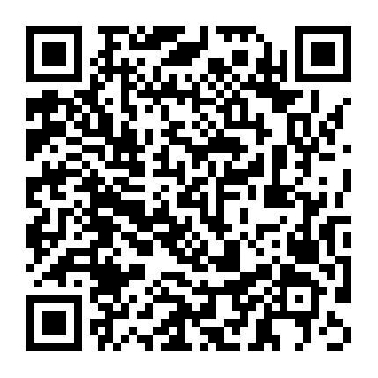高应力条件下的岩芯电磁性能变化
【类型】期刊
【作者】黄启文,李阿伟(李四光纪念馆;中国地质科学院地质力学研究所)
【作者单位】李四光纪念馆;中国地质科学院地质力学研究所
【刊名】地质力学学报
【关键词】 晶格模型;外电子云;量子穿隧效应;断键;电磁波;直流电;交流电;吸收能量;能量守恒
【资助项】地质力学研究所基本科研业务费项目 (DZLXJK201605)
【ISSN号】1006-6616
【页码】P453-458
【年份】2019
【期号】第4期
【期刊卷】1;|7;|8;|5
【摘要】根据标准晶格模型理论,在高应力作用下,岩石的Si-O键最外层电子将被挤入晶格间隙里,松散外逸的电子云在电场中将产生直流电流(DC),进而吸收电磁波,转换成交流电流(AC).直流电流来源于量子力学穿隧效应电子和断键电子.穿隧效应电子的形成过程和原理:氧原子的最外电子被束缚在浅位能井(shallow potential well)(0.38 V),当高应力作用时,电子吸收部分能量,增加其动能,虽然这种轻微的动能增加不足以使电子克服并跳出它的位能井(potential well),但它足以增加穿过井壁(well wall)进入晶格空隙间的概率,这个概率乘以可用氧原子的数目即为由于隧穿效应形成电子云的电子数量,其量级通常为微微库伦(picocoulombs)到纳米库伦(nanocoulombs).断键电子的形成过程和原理:从微裂纹开始断裂键释放电子,并且裂纹成核点极可能开始是平行排列的,每当Si-O键断裂时,就会产生一个+Si悬键,伴随着一个自由电子附着在-O原子上,这个电子将从原子跃迁到原子,这种电子电流与裂纹的表面积和电池电极的收集效率成正比.断键形成的电子云比穿隧效应多很多.两种电子均被试验所证实.在高应力条件下岩石破裂之前,由电子穿隧效应,DC缓慢增加,随着岩石破裂的发生而导致断键电子增多,DC急剧增加;AC的电压振幅(V)随电流(I)增大而减小,当电流减小到正常时,在岩石破裂后电压振幅回归正常;遵守能量守恒原理,吸收的电磁波能量(E)与交流电流功率(V×I)相等,即E=V×I.研究结果表明电磁波监测可用于探测地壳高应力变化和岩石破裂特征,当应力达到岩体断裂的临界强度时,其应变晶体结构开始释放越来越多的外逸电子,最终岩体晶体结构断裂产生一个地震或滑动事件.岩石破裂的电磁性能变化研究可用于研发电磁波地学监测仪器,电磁波监测可以作为地应力监测的一种补充和对比分析方法,两种方法相结合比地应力监测一种方法更可靠.此外,在高应力条件下岩石还有其它现象:应变蠕变辐射、 光发射、 声发射、 静电等,这些现象的观测也是预测地质事件需要考虑的条件.
【全文】 文献传递
STRESS INDUCED CHANGES IN THE ELECTRICAL-MAGNETIC PROPERTIES OF ROCK CORES
高应力条件下的岩芯电磁性能变化
直流电流来源于量子力学穿隧效应电子和断键电子。穿隧效应电子的形成过程和原理:氧原子的最外电子被束缚在浅位能井(shallow potential well)(0.38 V),当高应力作用时,电子吸收部分能量,增加其动能,虽然这种轻微的动能增加不足以使电子克服并跳出它的位能井(potential well),但它足以增加穿过井壁(well wall)进入晶格空隙间的概率,这个概率乘以可用氧原子的数目即为由于隧穿效应形成电子云的电子数量,其量级通常为微微库伦(picocoulombs)到纳米库伦(nanocoulombs)。断键电子的形成过程和原理:从微裂纹开始断裂键释放电子,并且裂纹成核点极可能开始是平行排列的,每当Si-O键断裂时,就会产生一个+Si悬键,伴随着一个自由电子附着在-O原子上,这个电子将从原子跃迁到原子,这种电子电流与裂纹的表面积和电池电极的收集效率成正比。断键形成的电子云比穿隧效应多很多。
两种电子均被试验所证实。在高应力条件下岩石破裂之前,由电子穿隧效应,DC缓慢增加,随着岩石破裂的发生而导致断键电子增多,DC急剧增加;AC的电压振幅(V)随电流(I)增大而减小,当电流减小到正常时,在岩石破裂后电压振幅回归正常;遵守能量守恒原理,吸收的电磁波能量(E)与交流电流功率(V×I)相等,即E= V×I。
研究结果表明电磁波监测可用于探测地壳高应力变化和岩石破裂特征,当应力达到岩体断裂的临界强度时,其应变晶体结构开始释放越来越多的外逸电子,最终岩体晶体结构断裂产生一个地震或滑动事件。岩石破裂的电磁性能变化研究可用于研发电磁波地学监测仪器,电磁波监测可以作为地应力监测的一种补充和对比分析方法,两种方法相结合比地应力监测一种方法更可靠。此外,在高应力条件下岩石还有其它现象:应变蠕变辐射、光发射、声发射、静电等,这些现象的观测也是预测地质事件需要考虑的条件。
0 Introduction
Brady[1,2], Li[3], Anastasiadis[4], Jensen[5], Niu[6], Ma[7,8], and Yao[9] have researched the electromagnetic properties of rocks under stress, and the electromagnetic (EM) waves produced and their interaction with the ionosphere.
To measure the electric current pulse produced under stress of fracturing rock samples, the charge measuring digital electrometer[4], and the short-circuit(to ground) streaming current[5] method have been used. Both show that at the onset of fracture there is a DC current pulse.
This experiment uses a third method: a closed series circuit to measure the induced exoelectron cloud. A battery is in series with a digital voltmeter, oscilloscope, and the rock sample. The digital voltmeter measures the DC current flow caused by the battery’s electric field, while the oscilloscope measures the AC component induced as the exoelectron cloud absorbs EM waves. The advantage of this closed setup is that both DC and AC currents are measured and it is easier to explore the physical origins of the exoelectron current.
Various phenomenological models have been proposed to explain the data: piezoelectric effect[1], and the moving charge dislocation model[4] (MCD). The existing Standard Lattice Model (SLM) popularized by physicists, and chemists is adopted here.
1 Theory and experimental setup
Poly-crystalline rocks (where the crystals are randomly oriented) can be modeled as a lattice array of predominantly Si-O-Si bonds(Figure 1). Other atoms can substitute for Si, eg. Li, Al, Ca, Na, etc.
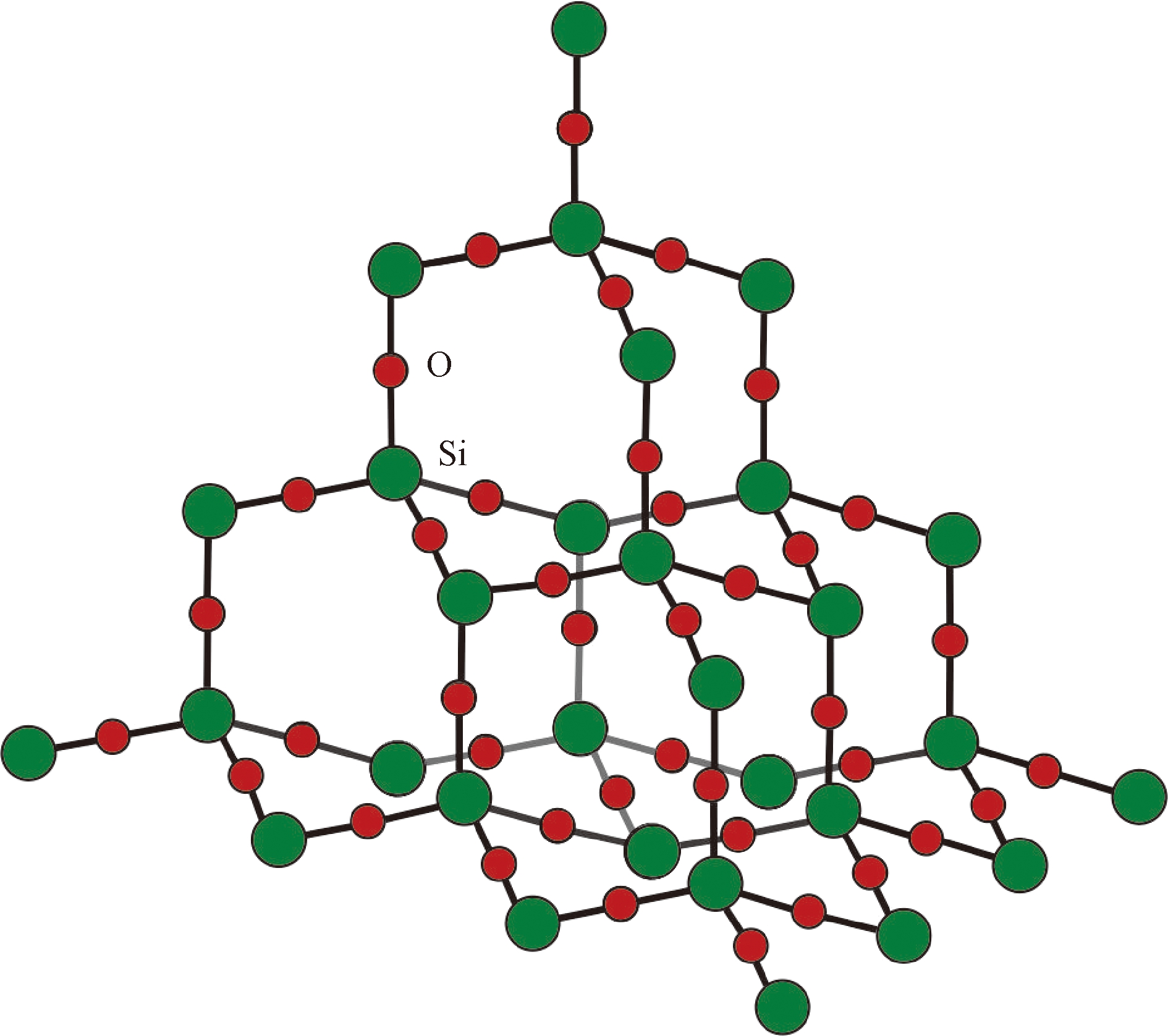
Fig.1 Quartz lattice structure, interstitial space
between atoms where exoelectrons can move in
图1 石英晶格结构(外溢电子挤入原子间
空隙,绿圈代表Si, 红圈代表O)
Under high pressure, the outer shell electron of the Si-O dipole will get squeezed into the interstitial space between atoms, creating a loosely bound exoelectron cloud that increases as the stress increases. This phenomenon which appears at high stress, is due to two sources: (a) the quantum mechanical electron tunneling effect[10], and (b) breaking bond electrons.
(a) The outermost electron of the oxygen atom is bound in a shallow potential well (~0.38 volts); when stress energy is applied, this electron absorbs part of this energy, thus increasing its kinetic energy. By itself, this slight increase in energy is insufficient for the electron to overcome and jump out of its potential well; but it is enough to increase its probability of tunneling through the well wall into the lattice interstitial between atoms. This probability multiplied by the number of available oxygen atoms gives the number of the electrons that tunnel out and form the exoelectron cloud: typically of the order of picocoulombs to nanocoulombs.
(b) Electrons released by breaking bonds from micro-crack initiation. Crack nucleation centres most probably start in parallel. Whenever a Si-O bond breaks, a dangling +Si bond is created along with a free electron attached to the -O atom which will hop from atom to atom. This electron current is proportional to the cracks’surface area, and the collection efficiency of the battery electrodes. The broken bond electron cloud is much more than the tunneling cloud.
The measured current pulse will have an initial slowly rising tunneling part, followed by a suddenly rising broken bond current.
The lattice under high pressure will also give rise to the following phenomena:
① strain-creep related EM radiation: due to the changes in Si-O dipole moment as the lattice contracts, and flows in different directions.
②light emission from breaking, and recombining Si-O bonds.
③charge accumulation, and separation resulting in spark discharges and the concurrent light and EM emissions.
④sound emissions from the strained lattice, and eventually crack propagation.
Further experiments are underway to measure these effects as a function of pressure.
Generally speaking, the exoelectron current effect is measurable in hard insulator rocks (granite, basalt, limestone, marble, etc.): the stress energy goes into distorting and breaking the Si-O bonds. In soft rocks (sandstone, shale, etc.) the stress energy is dissipated as the rock grains are forced into the inter-granular voids thus reducing the energy that could go into stressing the lattice bonds: consequently the exoelectron current is not measurable. Conducting rocks (pyrite, etc.) which have a relatively high background current flow would mask the normally weak exoelectron current(nano-amp range).
For this experiment granite (large grained, igneous rock) and basalt (fine grained) samples were chosen to differentiate between the piezoelectric explanation and the SLM explanation for the tunneling and broken bond current measured. Sandstone (porous) and shale (sedimentary rock) were also measured and show no clear exoelectron current effect. Marble (metamorphic rock) has been measured by others[4], and shown to have the DC exoelectron effect.
When the stressed core sample is placed in series with a battery, voltmeter and oscilloscope, the electron cloud will flow. The voltmeter detects the direct current (DC) I, and the oscilloscope measures the alternating current (AC) component.
The exoelectron cloud will also absorb, and scatter an E.M. wave. The wave’s energy E (a constant) is converted into the induced alternating (AC) current’s power: V(f)×I(f). The frequency of the current is also the wave’s frequency f.
The energy of the EM wave is a constant during the experiment: E=V×I. Thus when the current I increases (as when tunneling electrons and breaking bond electrons move into the interstitial lattice), V drops. This drop in the AC amplitude as the stress increases is measured with the oscilloscope’s Fourier Transform feature.
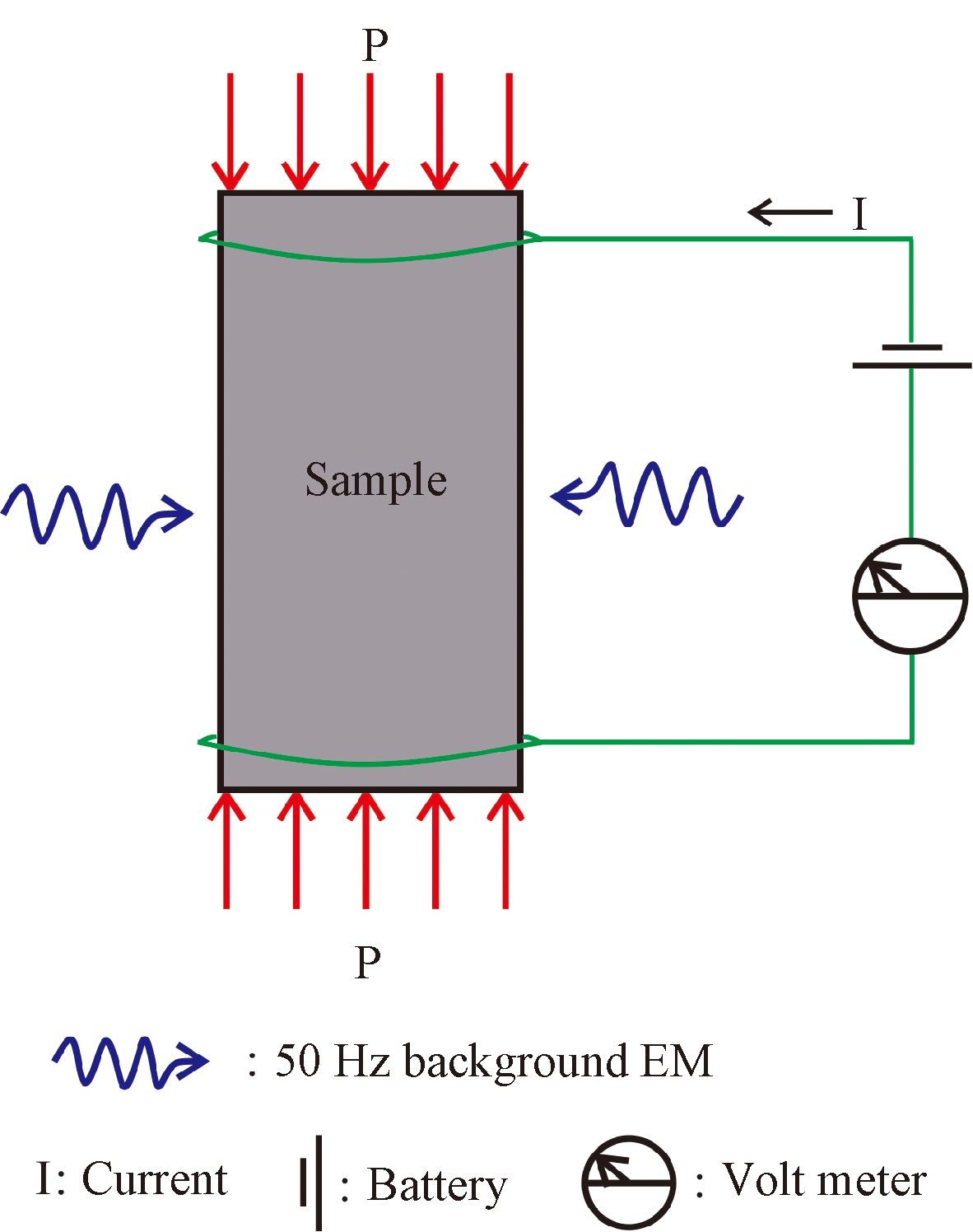
Fig.2 Experimental setup (200 ton press, with the sample
(25 mm×50 mm cylinder), voltmeter, oscilloscope, and
battery in a series circuit, and 50 Hz background radiation)
图2 实验装置(220吨压力机、25 mm×50 mm
圆柱型样品、电压表、示波器、电池串联电路和50 Hz背景辐射)
2 Results
The direct current I (mV) vs Stress curves measured by the digital voltmeter (DVM) for granite (Figure 3), and basalt follow (Figure 4). Both show an initial distinct gradual rise in I (due to the tunneling current), before a sudden rise (due to breaking bonds) at the fracture point.

Fig.3 Voltage vs Stress/Time, granite sample
图3 花岗岩电压随应力/时间变化的曲线
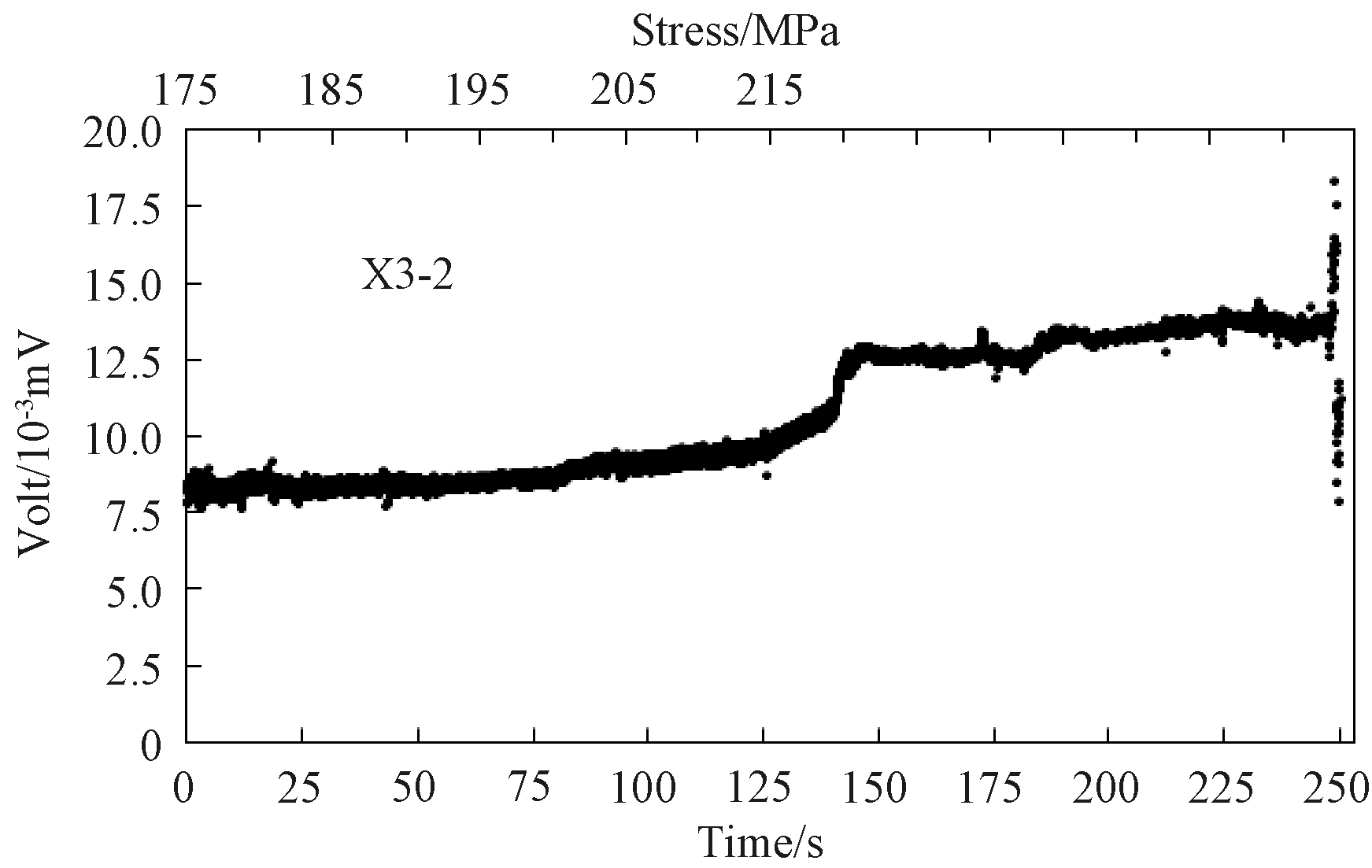
Fig.4 Voltage vs Stress/Time, basalt sample
图4 玄武岩电压随应力/时间变化的曲线
The next photo shows the AC current results: First is the oscilloscope trace of the 50 Hz AC current component; then immediately below, the Fourier Transform showing the 50 Hz peak bracketed by left cursor at 40 Hz and right cursor at 60 Hz.(Figure 5)
Figure 6 shows the start of the drop in the FT voltage peak as the AC current increases at higher and higher stress. A minimum is reached just before the major fracture, and minor cracks sounds are heard. After complete fracture and the stress drops to zero, the voltage peak rises back to the same level before stress was applied.
This small experiment confirms that EM waves can actively probe the stress changes in a highly stressed crust zone just before crack initiation. As the stress increases to breaking point, the exoelectron cloud increases in size.
3 Discussion
It has been suggested that the DC exoelectron current effect can be due to a piezoelectric cause. However a careful use of the Standard Lattice Model rules out this explanation: 1) Both granite (with coarse grained randomly oriented crystals, which might have a piezoelectric effect) and basalt (with fine grained crystals, with no known piezoelectric properties) have the same characteristic I(current) vs Stress curve at the approach to rupture, i.e. a slow rise followed by a sharp rise. 2) The strain/stress on a non-central symmetric piezoelectric crystal induces an electric field (voltage), but no free electrons. This is the definition of the piezoelectric effect. 3) Moreover, the piezo-voltage effect is present at low pressures too; Whereas the exoelectron current effect is only observed at high stress close to the rupture point.
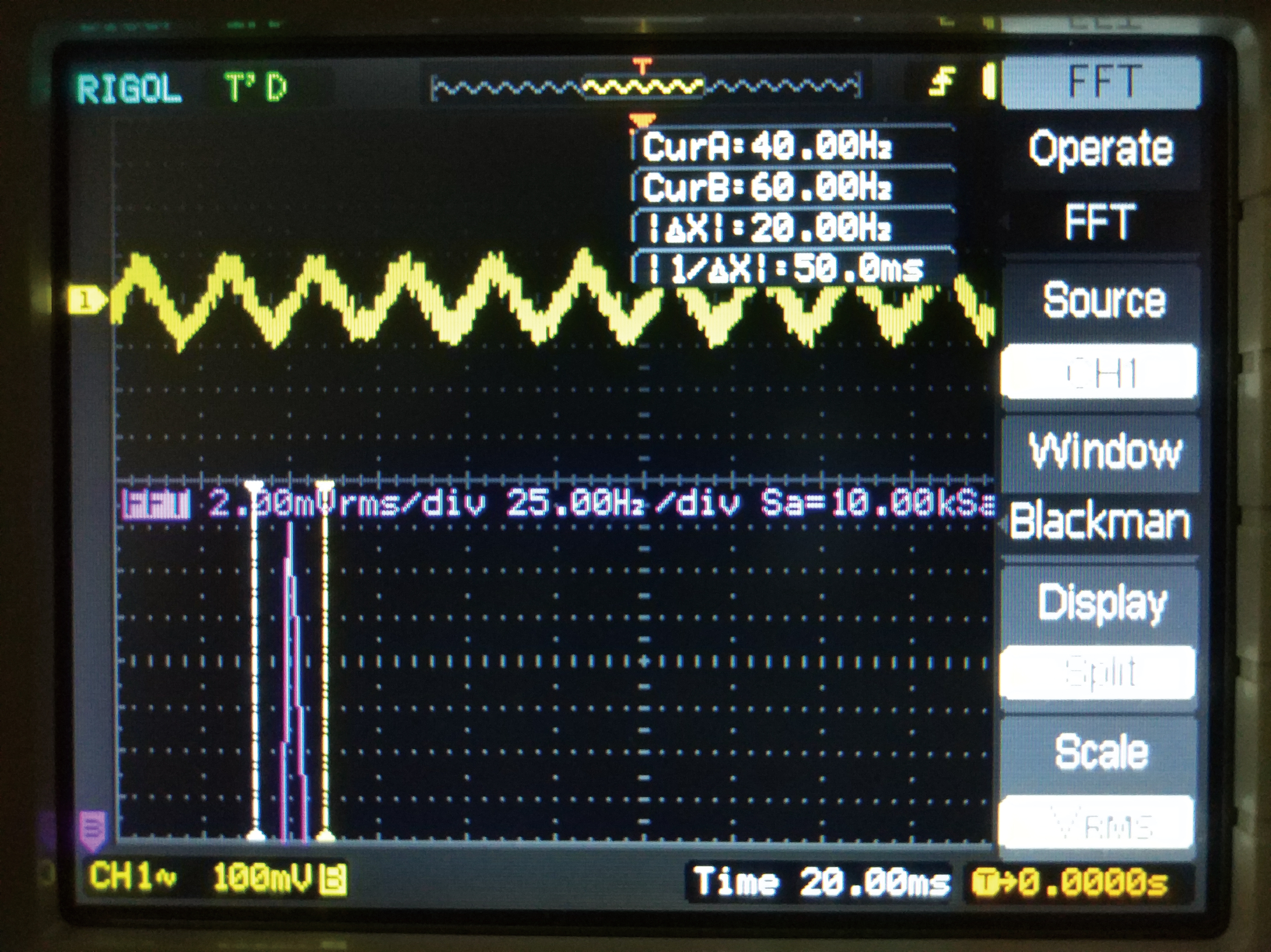
Fig.5 Screen photo
图5 示波器显示照片
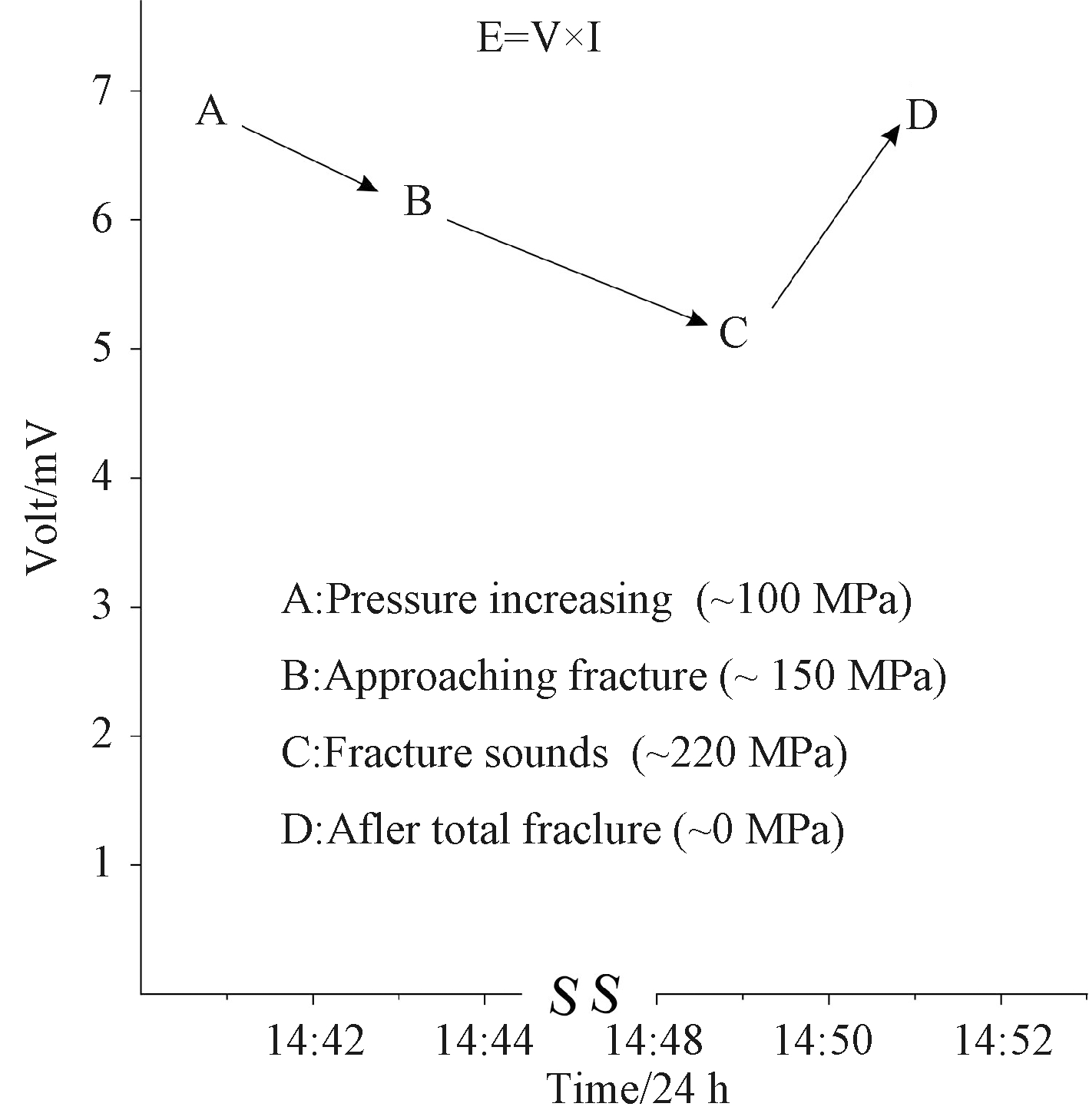
Fig.6 50 Hz FT peak at different times
图6 不同时间下50Hz FT波峰
The exo-electron cloud and the induced DC current explains in a simple way the changes in rock sample conductivity (resistance) at high stress or pressures as reported by others. It also is the reason for increases in the measured electric charge field in crushing concrete compression tests.
Ultra-low-frequency (ULF) waves[3]interacting with the ionosphere are being studied for earthquake precursors. These time-coincident data are complicated and do not show a clear cause-effect relationship. Satellite and ground receivers are used in this research.
These studies use a ‘passive’ method unlike the ‘active’ approach proposed in this research: a radio transmitter transmits an EM wave that reflects off the exoelectron cloud created by a high differential stress fault zone.
This active method would complement the existing ground station, and satellite receiving networks.
4 Conclusion & Potential applications
The AC (alternating current) exoelectron current effect shows that the absorption of EM waves by rupturing rock, though small, is measurable and can be exploited to good effect.
A probing E.M. wave beam will reflect off the exoelectron cloud produced at a high stress fault zone. When the differential stress reaches a critical intensity, the zone’s strained crystal structure starts releasing more and more exoelectrons. Eventually the crystalline rock structure starts to crack producing an event. Further experiments are planned to measure and confirm this remote active sensing method.
The reflected EM waves data would complement in-situ stress data[6,7]. These two methods together would be more effective than either one individually.
It is pointed out that other phenomena: strain-creep radiation, light emission, sound emission, and static electricity are produced concurrently. The detection and measurement of all the above five phenomena would be a necessary condition to anticipate an actual event.
Acknowledgements:This research was supported by a Director’s Research grant(2016-2018,DZLXJK201605). The assistance, and advice from the following are gratefully noted: PENG Hua, WANG Hongcai, MA Xiumin, JIANG Jingjie, PENG Liguo, WANG Fusheng, MA Yue,SUN Dongsheng, LIU Shengxin
[1] BRADY B T, ROWEL G A. Laboratory investigation of the electrodynamics of rock fracture[J]. Nature, 1986, 321(6069): 488-492.
[2] CRESS G O, BRADY B T, ROWEL G A. Sources of electromagnetic radiation from fracture of rock samples in the laboratory[J]. Geophysical Research Letters, 1987, 14(4): 331-334.
[3] LI M, LU J, PARROT M, et al. Review of unprecedented ULF electromagnetic anomalous emissions possibly related to the Wenchuan MS=8.0 earthquake May 12, 2008[J]. Natural Hazards and Earth System Sciences, 2013, 13(2): 279-286.
[4] ANASTASIADIS et al. Electric and EM signals from rocks under stress[A]. 2nd IASME/WSEAS Geology and Seismology Conference Proceedings (GES 08)[C]. Cambridge, UK: 2008, Feb 23-25.
[5] JENSEN E A. A comparison of Short-Circuited Streaming Potentials in Westerly granite from Changes in Rock’s Volume, Shape, Saturation and Fracture Under Unconfined Uniaxial Compression[D]. Cambridge: Massachusetts Institute of Technology, 1999.
[6] 牛琳琳, 丰成君, 张鹏, 等. 鄂尔多斯地块南缘地应力测量研究[J]. 地质力学学报, 2018, 24(1): 25-34, doi: 10.12090/j.issn.1006-6616.2018.24.01.003.
NIU Linlin, FENG Chengjun, ZHANG Peng, et al. In-situ measurements in the southern margin of the Ordos block[J]. Journal of Geomechanics, 2018, 24(1): 25-34, doi: 10.12090/j.issn.1006-6616.2018.24.01.003. (in Chinese with English abstract)
[7] CAI M F, PENG H, MA X M, et al. Evolution of the in situ rock strain observed at Shandan monitoring station during the M8.0 earthquake in Wenchuan, China[J]. International Journal of Rock Mechanics and Mining Sciences, 2009, 46(5): 952-955.
[8] 马秀敏, 彭华, 白金朋, 等. 岩石非弹性应变恢复(ASR)地应力测试方法中柔度研究进展评述[J]. 地质力学学报, 2017, 23(4): 526-530.
MA Xiumin, PENG Hua, BAI Jinpeng, et al. Review on the research progress of the compliance of rocks in in-situ stress measurement methods of anelastic strain recovery (ASR)[J]. Journal of Geomechanics, 2017, 23(4): 526-530. (in Chinese with English abstract)
[9] 姚鑫, 周振凯, 李凌婧, 等. 2017年四川九寨沟MS7.0地震InSAR同震形变场及发震构造探讨[J]. 地质力学学报, 2017, 23(4): 507-514.
YAO Xin, ZHOU Zhenkai, LI Lingjing, et al. InSAR co-seismic deformation of 2017 MS7.0 Jiuzhaigou earthquake and discussions on seismogenic tectonics[J]. Journal of Geomechanics, 2017, 23(4): 507-514. (in Chinese with English abstract)
[10] SCHIFF L I. Quantum mechanics[M]. 3rd ed. New York: McGraw-Hill Companies, 1968: 100-104.

